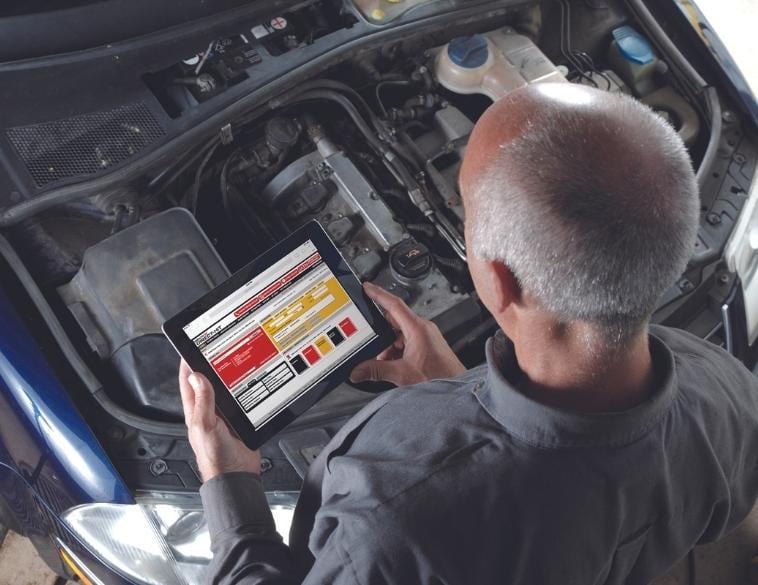Over the last 15 years, automotive service technicians have seen a dramatic change in vehicle technology.
To properly repair late-model vehicles today requires a significant understanding of these technologies as well as an effective strategy by service centres to ensure technician proficiency and capability when it comes to fixing these cars and trucks.
According to Chris Chesney, Vice President, Training and Organizational Development at Repairify; while advances in vehicle technology have essentially forced the hand of the aftermarket when it comes to investments in diagnostic training and equipment, many service shops still struggle to keep pace.
Service readiness
Chesney notes that it’s important for shops to consider the concept of service readiness since it is absolutely critical due to the amount of time and money spent on the backs of the shop’s customers.
“It’s that customer’s time that we really need to manage,” Chesney explains, yet in order to do that effectively, the shop’s technicians need to have the skill sets that allow them to understand modern data networks, so that if the diagnosis reveals, for example, the failure of a particular module on that vehicle, the tech is able to ensure the replacement component is properly reintroduced to the network on the vehicle and, as efficiently as possible.
Chesney also stresses the importance of shop owners, managers and service advisors moving away from traditional business models of where a customer drops off the vehicle and waits for it to be repaired, to meeting their clients where they want to be met. “Over the last decade, we’ve seen more and more shops collecting and dropping off vehicles, reducing the pressure for the motorist to spend time at the shop.” Additionally, he says, providing communication and payment options via online or text, significantly speeds up the process of diagnostic repairs and also reduces the risk of potential friction between the client and the shop.
Insufficient information
Mark Lemay, a diagnostic specialist who owns and operates Auto Aide Technical Services in Barrie, Ont., says that the growth in vehicle complexity, particularly as it relates to computers, data and sensors, means that sometimes, repair information from the OEM can be insufficient to fix the actual problem. This becomes a particular issue when the technician isn’t able to follow a trouble code to fix the vehicle and may not have the skills required to look beyond the scope of what the trouble tree is telling them. To help remedy this situation, Lemay says better descriptions of how these systems operate are needed, as well as ensuring technicians have the right skills and tools to handle these kinds of complex diagnostic issues.
On the subject of tools and information access, independent aftermarket service centres also need to invest their dollars wisely. On the surface, it can seem that the concept of repairing all makes and all models becomes increasingly difficult due to data and information access requirements related to modern diagnostics.
Rob Ingram, who owns and operates Eldon Ingram NAPA AUTOPRO in Stratford, Ont., explains that a shop must have a billing program that allows staff to track customers and vehicles that come in. By doing so, the program can paint an actual picture of the types of vehicles that shop most frequently services. “If you discover that a significant number of vehicles you repair are Chrysler or Stellantis products and the nearest Chrysler dealer is 20-30 km away, then it makes sense for you to invest in the factory scan tool for these vehicles and the subscription information that’s required to properly diagnose and fix them.”
How things work
While most OEMs today, have certainly improved information access for the aftermarket when it comes to repairing data, the problem often lies with the way in which this information is presented. “Descriptions and operating theory on how things work, can almost be non-existent,” explains Mark Lemay “and this can be a big issue when you’re running into something like a transmission shift problem that is actually caused by an oil-pressure sensor on the engine. The transmission goes into limp mode and you’re chasing an issue with the transmission when in fact, it’s the faulty oil pressure sensor that’s causing it.”
Lemay says in these kinds of situations, there often isn’t anything in the repair information that says an oil-pressure code will trigger the vehicle’s PCM to place the transmission in limp mode. “The proprietary information is there, but the description and operation of components can often be very vague,” says Lemay.
Collaboration and Preparation
While gaps exist in repair information which can make it sometimes challenging to fix high-tech late-model vehicles, the aftermarket does offer solutions. Specifically, as Mark Lemay and Chris Chesney both note; collaboration between technicians, shops and even support through repair networks like ALLDATA and Identifix can prove a huge benefit for technicians struggling with a specific problem. Additionally, as we see more hybrid and electric vehicles entering aftermarket service bays, the OEMs are helping set the stage. “EVs are no more complex than the latest internal combustion engine vehicles coming off the assembly line today,” says Chesney.
Where the difference lies is in the high voltage systems, so additional skillsets based around this and alternating current are needed, but as Chesney notes, given that hybrids have been with us now for two decades, savvy shop operators have known about making these kinds of training investments years ago. And OEMs like Toyota and latterly, even Tesla offer service information for the aftermarket on hybrids and battery-electric vehicles, meaning there really is no need, nor excuse not to stay current with the latest vehicle diagnostic and repair requirements.



